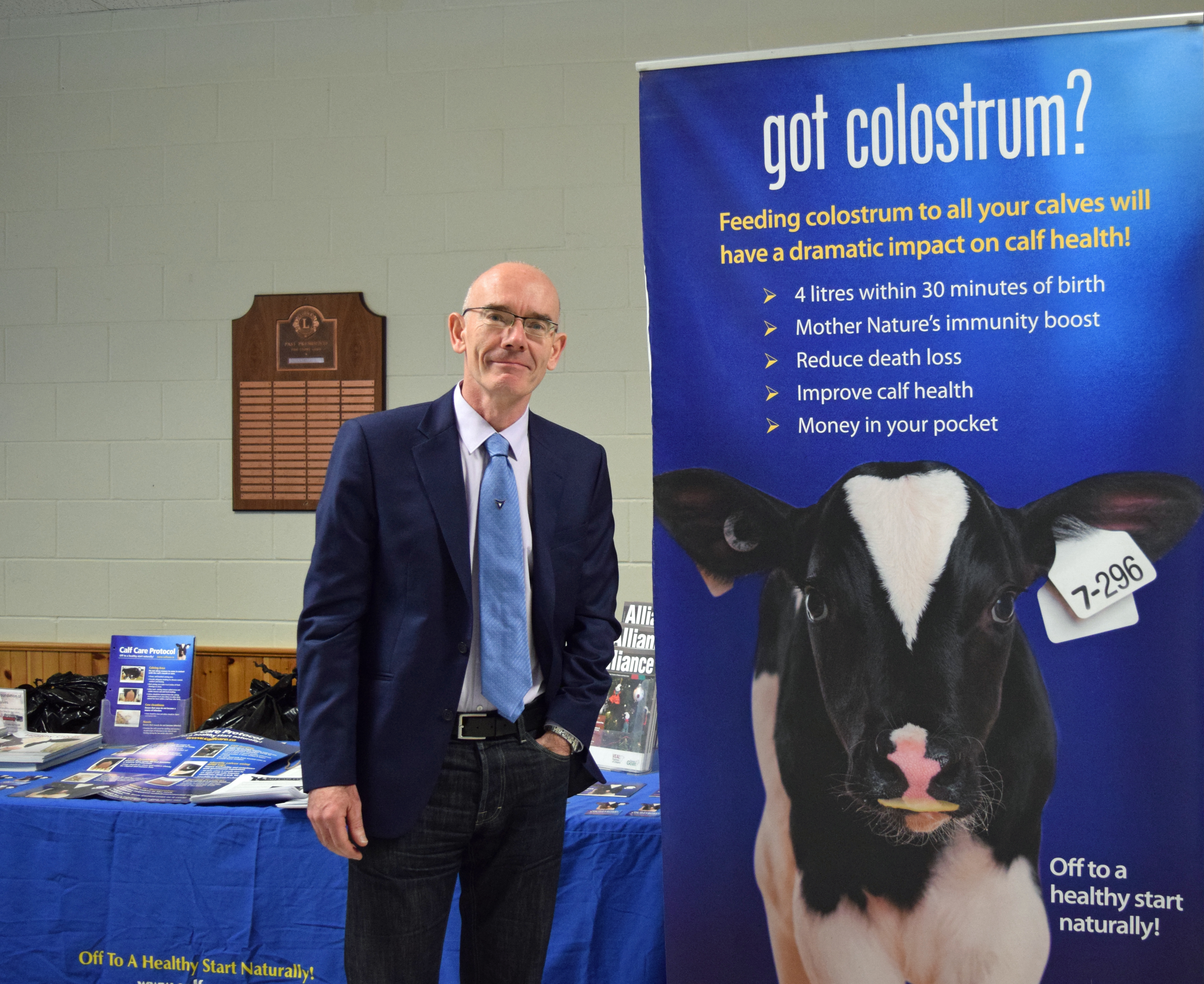Healthy Calf Conference
Follow to stay up-to-date on all Healthy Calf Conference updates. Speaker announcements, sponsorship information, registration announcements, and more.

According to a leading dairy researcher, approximately 85 per cent of newborn calf mortalities happen within one hour of calving. And 66 per cent of calves that die in the perinatal period – the time immediately before or immediately after birth – were alive at the start of calving.
That means many of these losses can be prevented through better newborn calf care, said Dr. John Mee, of the Moorepark Dairy Research Centre in Ireland, during his presentation at the Building the Foundation 2016 Dairy and Veal Healthy Calf Conference. The event was hosted by Veal Farmers of Ontario (VFO) with support through Growing Forward 2, a federal-provincial-territorial initiative.
“Calving is not a professional job, it’s mostly done by people who learn from their forebears and usually not formally, so it’s hugely variable,” he stated.
He said Canadian research suggests calf mortality is underestimated by up to 50 per cent of producers, and only one per cent of Canadian farmers rank difficult calving as a key dairy industry issue.
According to Mee, 95 per cent of the calves who die do so in the first five minutes, so what farmers do in those first five minutes of the calf’s life can have a significant impact.
At-risk calvings include C-sections, dystocia, calf in an abnormal position, prolonged calving, difficult assistance, or an unexpected twin, and research has shown a clear relationship between calving difficulty and calf vigour.
The triage approach to caring for at-risk newborn calves in their first hour of life includes vitality assessment, resuscitation if necessary, navel disinfection, colostrum feeding and calf removal.
“There’s about an hour of time after birth, the “golden hour,” for rapid assessment and rapid intervention,” Mee said. “There’s no point in feeding colostrum six hours after birth.”
High-risk calves can be identified before birth, from dam and sire characteristics, as well as from the colour of the liquid in the amniotic sack, Mee said. He explained that the water should be translucent. If it is brown or yellow, the calf has defecated and is stressed; red fluid means bleeding.
During birth, a red muzzle, swollen limbs, poor reflexes and a hard, swollen tongue are indicators of stress. And right after birth, abnormal or absent breathing, lying on its side, abnormal heart rate, and poor suckling, tongue and leg reflexes are risk signs.
“A calf that takes 10 minutes to get to sitting up has a really high chance of not making it,” he stated. “A calf with a good suck reflex about 10 minutes after birth is more likely to consume colostrum.”
For a normal calf, Mee recommends the following steps immediate after birth:
By comparison, his recommendations for a weak newborn calf are to:
At-risk calves can be born with fluid in the lungs and airways, resulting in the need to clear them out to enable proper breathing. The onset of breathing normally occurs within five seconds of birth, but at-risk newborns may need extra stimulation, such as pouring cold water on the ear or head, tickling the nose with straw, or pinching the nasal septum.
“Nasal stimulation and hypothermal stimulation will provoke a gasp reflex on both,” Mee said. “These things work and they’re practical things that you can do to have a benefit.”
Place the calf sitting upright so its lungs have room to expand efficiently. If the calf doesn’t begin to breathe normally, physical resuscitation is recommended. This includes compressing and expanding the thorax, and positive pressure ventilation using a respirator pump or a resuscitator bag.
“For positive pressure ventilation, you need two people to use it properly. If you don’t have two people, you’re only inflating the stomach and not the lungs,” he cautioned.
According to Mee, the five most frequently practised resuscitative procedures by producers in Canada with weak calves are (in descending order): nostril stimulation, calf suspension, hypothermal stimulation, resuscitation pumps and stimulant drugs.
By comparison, U.S. producers with weak calves use (in descending order): nostril stimulation, calf suspension, drying the calf, sternal placement and warming the calf, according to 2010 data from the United States Department of Agriculture.
When feeding colostrum, Mee recommended following the “1-2-3 rule”: use first milking only in newborn calves, feeding colostrum within two hours of birth and feeding at least three litres.
A recommended best practice on large dairy operations internationally is “snatch calving.” This is where the calf is removed from the cow within about 15 minutes of birth, once the dam has licked it dry. Maternity pens are great sources of bacteria, so the longer calf stays in that environment, the greater its chances of contracting gut, navel or lung infections.
This project was funded in part through Growing Forward 2 (GF2), a federal-provincial-territorial initiative. The Agricultural Adaptation Council assists in the delivery of GF2 in Ontario.
Follow to stay up-to-date on all Healthy Calf Conference updates. Speaker announcements, sponsorship information, registration announcements, and more.
The Codes of Practice are nationally developed guidelines for the care and handling of farm animals. They serve as our national understanding of animal care requirements and recommended practices.